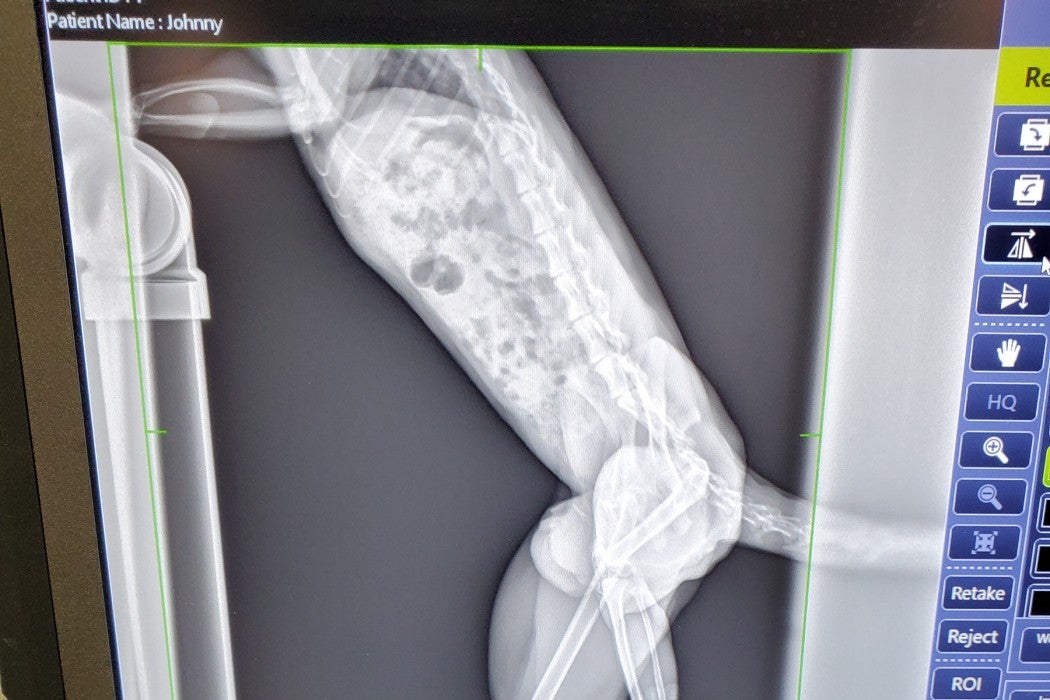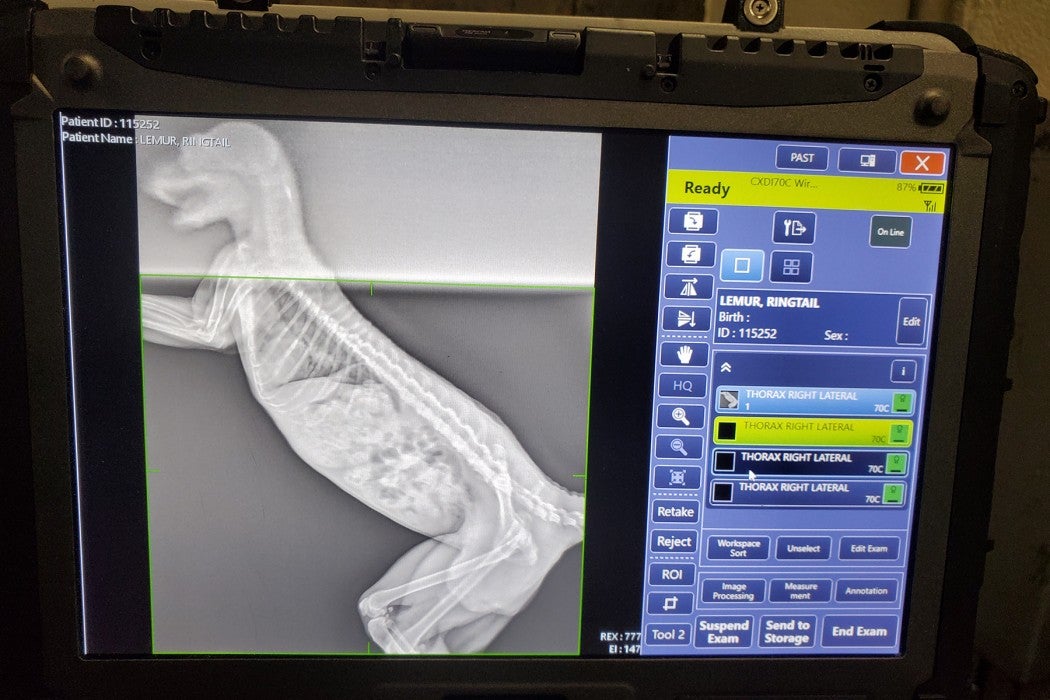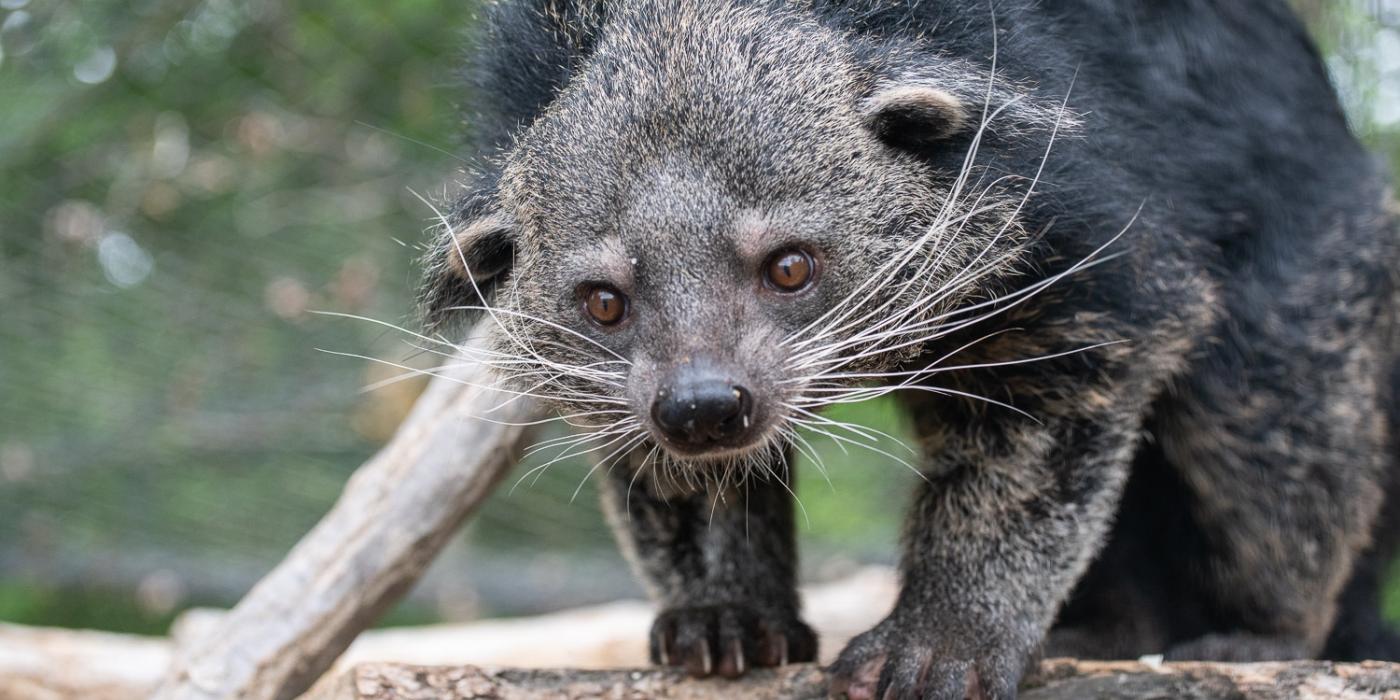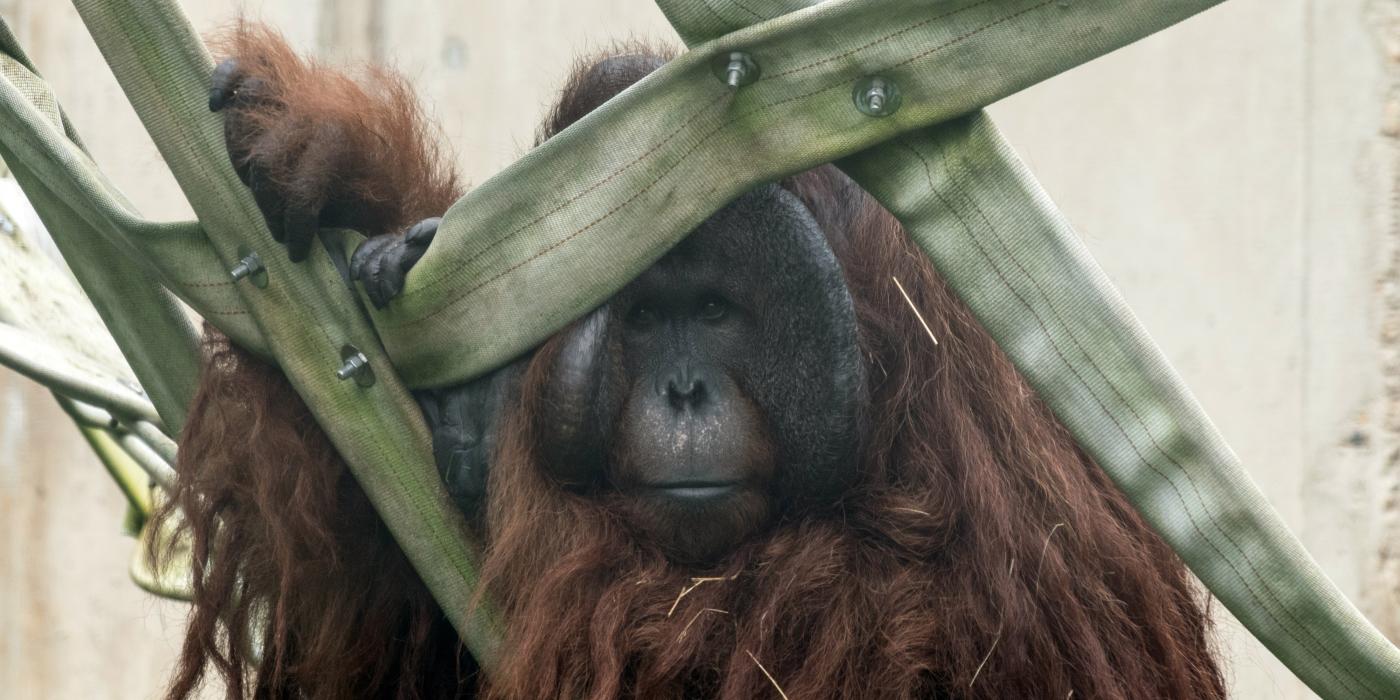How Do You Train a Lemur for Voluntary Radiographs?
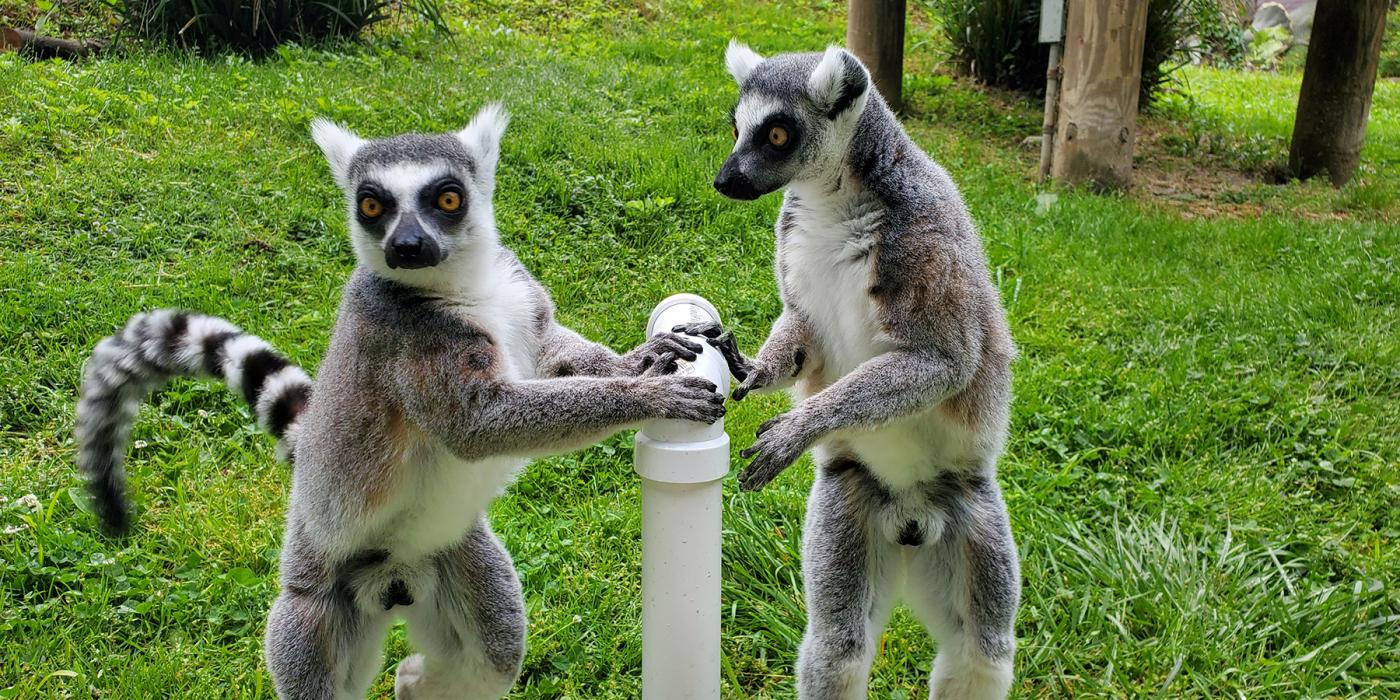
At Lemur Island, school is always in session for our ring-tailed and black-and-white ruffed residents. Part of my job as a keeper entails teaching the lemurs husbandry behaviors that help our team care for them. Training starts with simple actions: touching their nose to a target, sitting on a scale, or presenting a body part. Once they understand the basics, we can work on more complex behaviors like voluntary injections, abdominal ultrasounds and awake radiographs.
You may be wondering: why train lemurs in the first place? Doing so helps us build a trusting relationship with our animals and provide them with the best care possible. As our bond grows, we are able to view them up close, get to know their behavioral quirks (i.e. what’s normal vs. abnormal), and monitor their overall health. In general, when animals participate in their own healthcare, it reduces the stress that they and their caretakers might otherwise experience when it comes time for a checkup.
Over the past year-and-a-half, I have been training our four ring-tailed lemurs (Birch, Bowie, Tom Petty and Southside Johnny) and two black-and-white ruffed lemurs (Aloke and Wiley) to voluntarily participate in awake radiographs. This means that instead of having to travel to the Veterinary Hospital, they can stay in their indoor habitat, and the vets come to them!
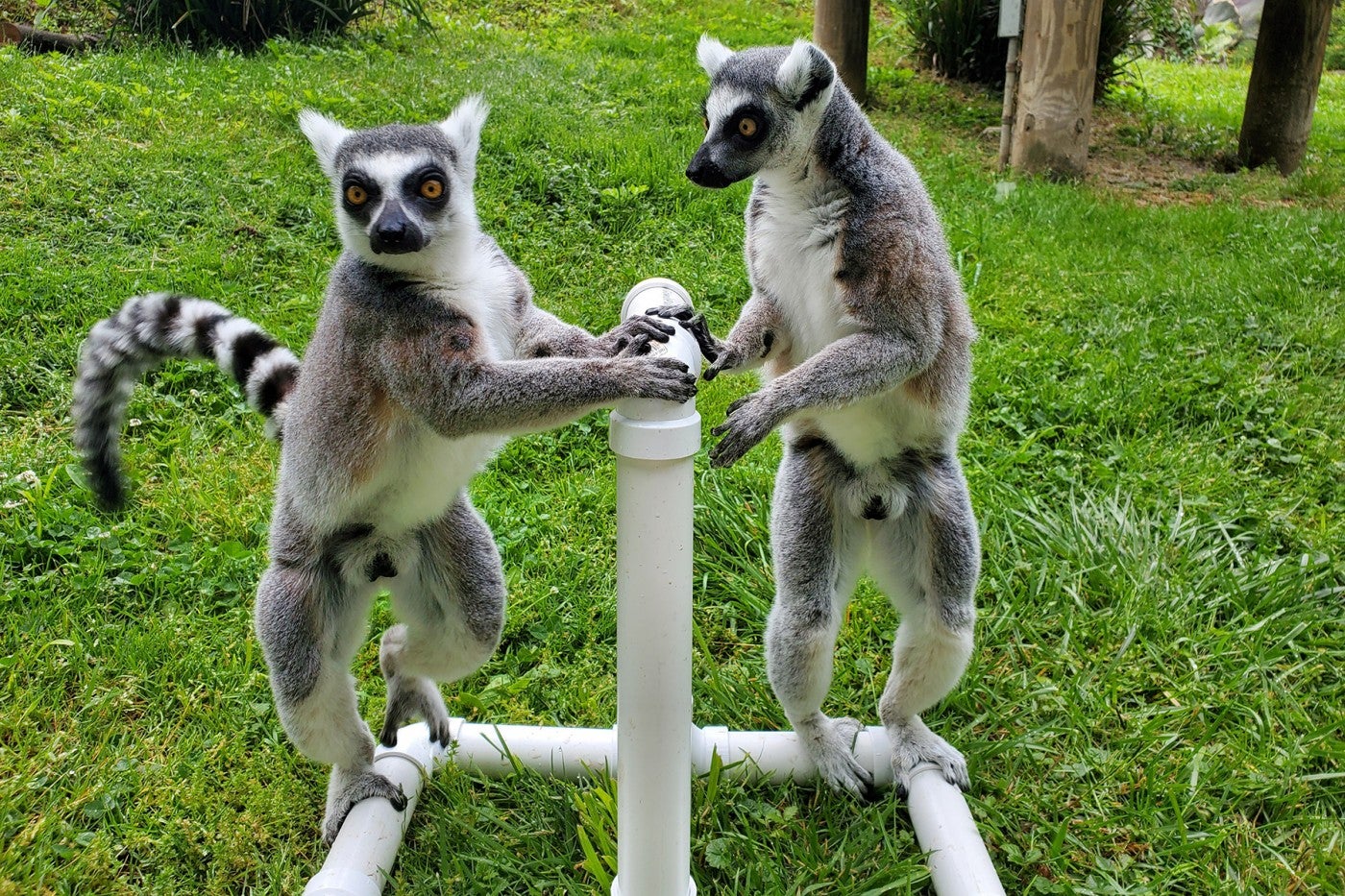
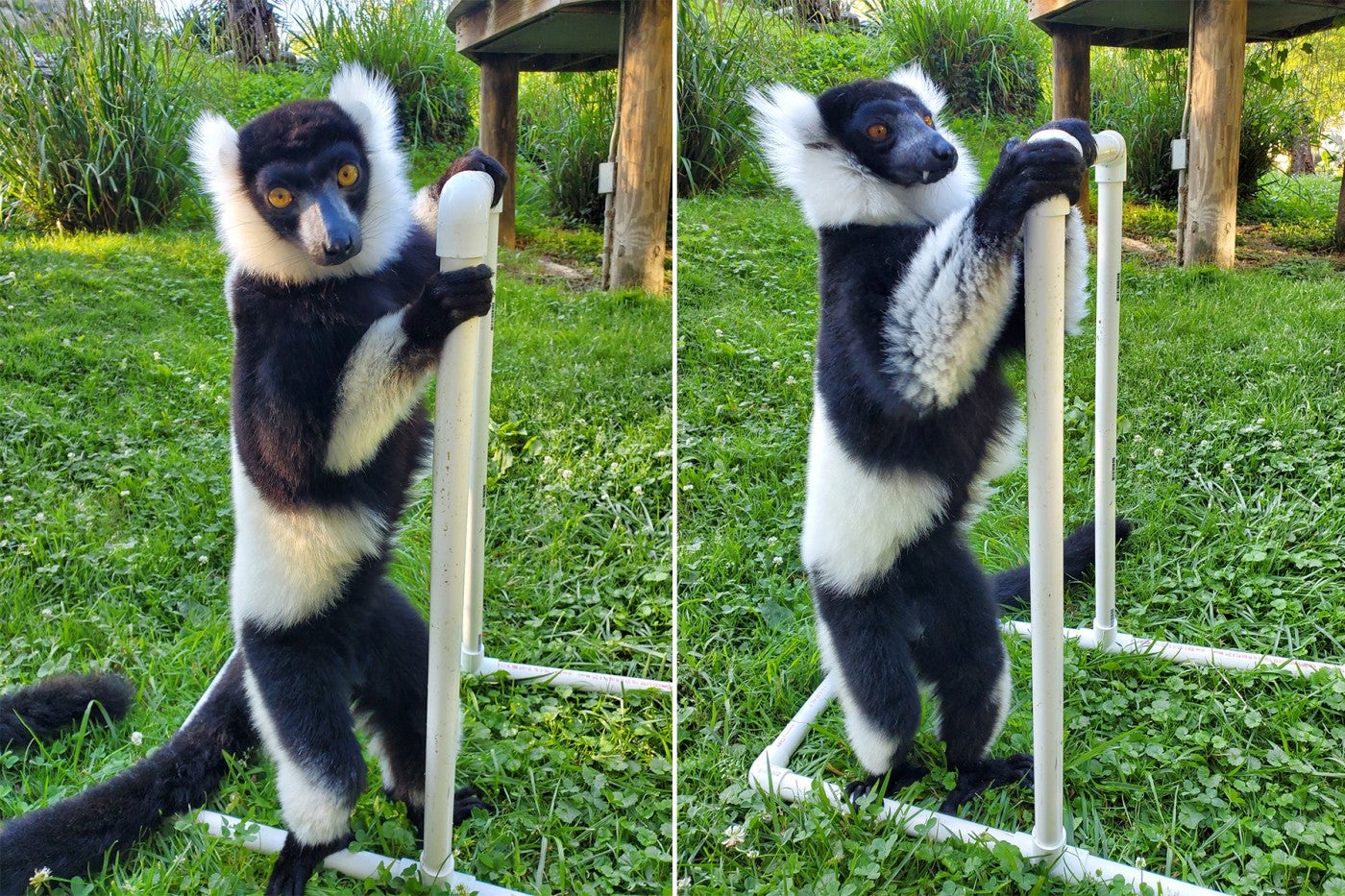
Previously, if we wanted radiographs of the lemurs’ organs or bones, it would involve training them to enter a crate, taking them away from their troop, anesthetizing them for the medical procedure and returning them to their exhibit to wake up.
Lemurs are social animals, and any disruption to their troop can be stressful for all of them—not just the individual being examined. Even temporarily removing individuals can affect the troop’s social structure and might make it difficult to reunite everyone once the procedure is over. For these reasons, we wanted to teach the lemurs to voluntarily participate in awake radiographs.
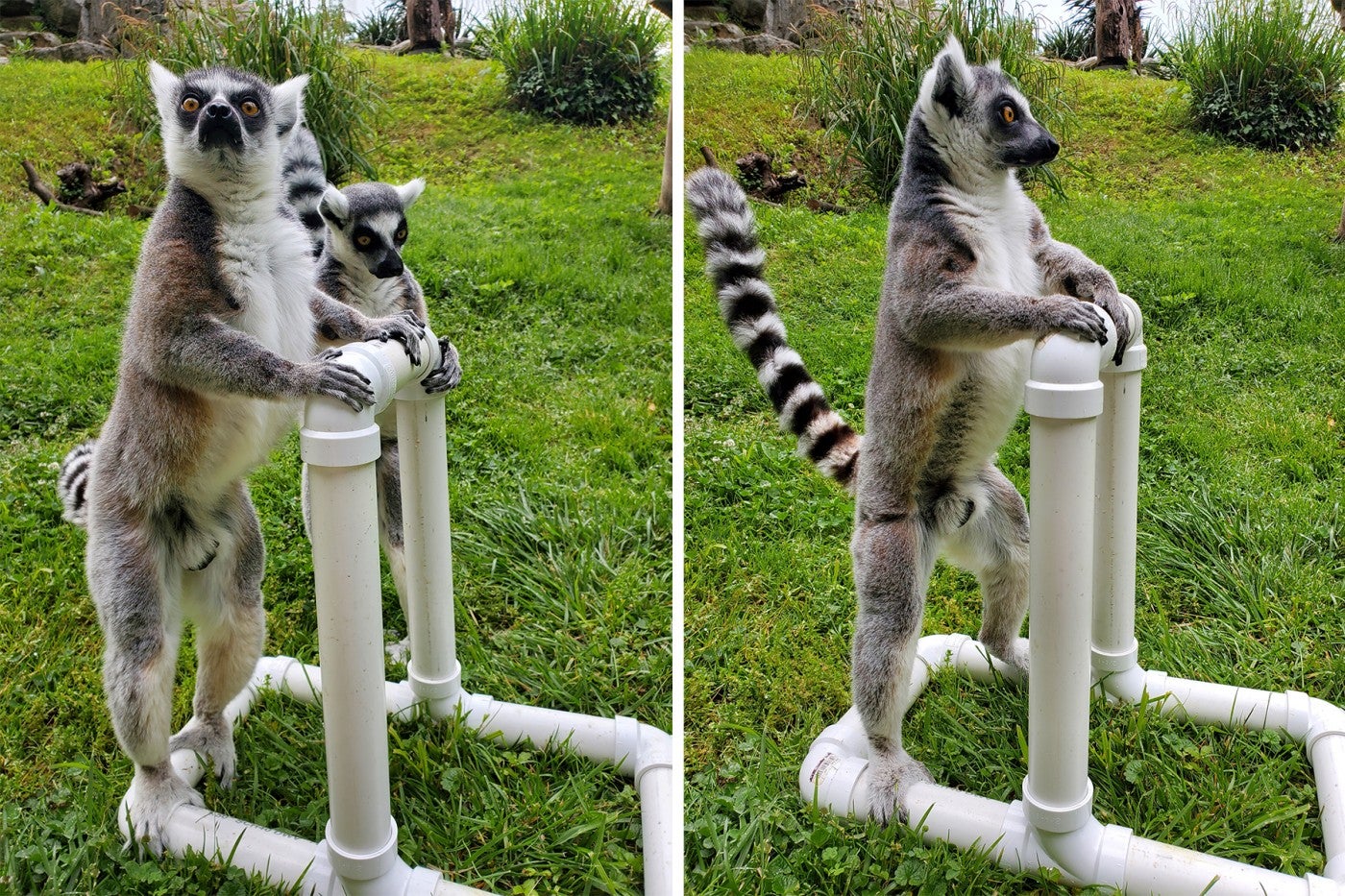
Step one was acquiring the tools we needed to train the lemurs. The first was a PVC “t-stand,” which gave the lemurs a guide for where to put their hands and feet. Since the ring-tailed lemurs are quite a bit smaller than the black-and-white ruffed lemurs, we needed two different stands, sized for each species.
Step two was desensitizing the lemurs to the medical equipment. Specifically, a bright yellow radiograph machine. Luckily, the keepers on American Trail made a “fake” radiograph machine out of cardboard and yellow tape, which they let us borrow. We used it throughout the training process to get the lemurs used to what the real machine looks like.
Step three was finding a simple metal frame to hang the X-ray plate on. During our practice sessions, I substituted the plate with a piece of cardboard to fill the frame.
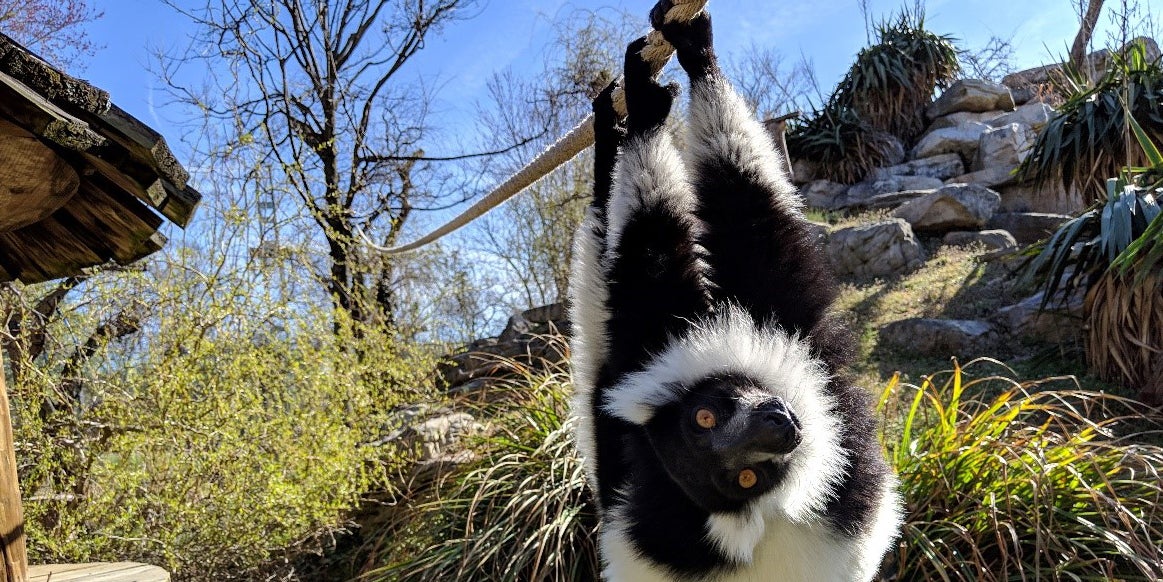
The last (and most important) tool I needed was raisins! The lemurs love raisins, which are a special treat that they only get during training sessions. When they do the correct behaviors asked of them, they receive raisins as their reward.
The first behavior the lemurs learned was how to sit on the t-stand in the correct position. They needed to place their hands on top of the t-stand while keeping both feet flat on the ground. If they put their feet on the vertical parts of the t-stand, it might prevent us from getting a good view of their internal organs.
Lemur social dynamics can be tricky to navigate, so I trained them individually rather than as a group. Conducting one-on-one sessions prevented more dominant individuals from hogging the spotlight and displacing individuals that are more subordinate.
At first, I trained them in the Lemur Island outdoor habitat. Inside, there are many distractions—enrichment items, firehose vines to climb and, of course, other lemurs! One at a time, I let the individuals outside and asked them to get on the t-stand. Every time they put their limbs in the correct position, they received a tasty raisin. If they did not position correctly, I simply ignored that behavior until they were in the right spot. They caught on quickly and, in no time, they stood in the correct position on the t-stand whenever I brought it out.
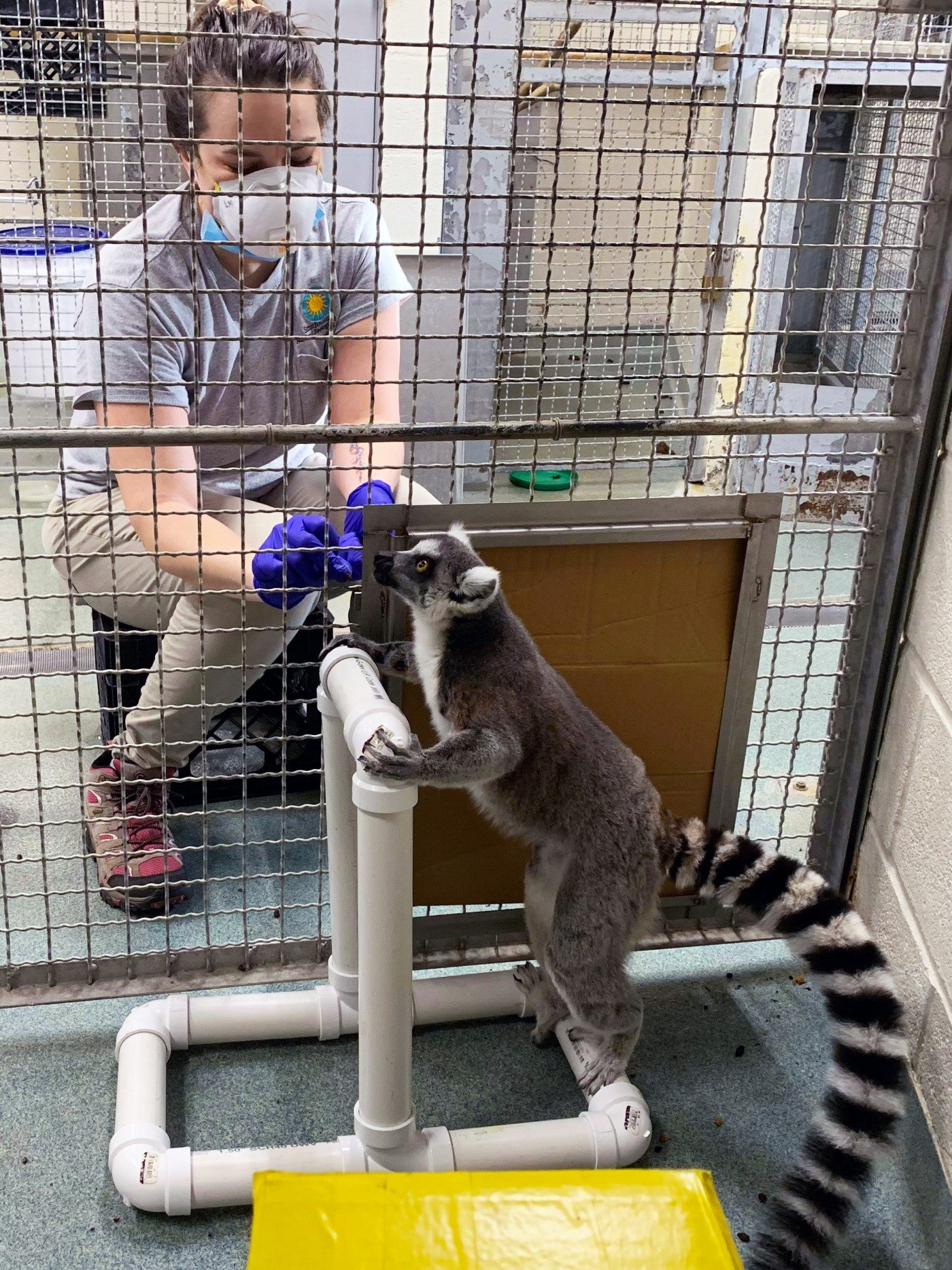
Having mastered this behavior outside, we moved the training inside. This step was challenging for a few reasons. Indoors, I have to remain outside of their enclosures, and there is a mesh barrier between the lemurs and I. The lemurs can easily grab onto the mesh with their hands or feet, taking them out of the t-stand position.
In the lemurs’ indoor enclosure, there is a bench about as high as my hip. To start, I placed the t-stand there. One at a time, I let the lemurs into the enclosure and tapped on the top of the t-stand with my finger—their cue to get in place.
VIDEO: On Lynne's cue, ring-tailed lemur Bowie gets into position.
Luckily, they were all eager to participate in this training. Although a few tried to ‘cheat’ by hanging their back foot on the mesh or the vertical part of the t-stand, I ignored those behaviors and gave rewards only when they had both hands and feet in the correct position. They quickly learned not to hang on the mesh.
From there, I moved the t-stand to the floor since that is where our vet team takes the real radiographs. It was difficult to get some individuals to come to this spot, but others did so more readily. I used that to my advantage. I allowed more nervous lemurs into the enclosure with confident ones so that they could watch the training session. Once the nervous individual saw the confident one receiving raisins, they were more than willing to come to the ground to participate!
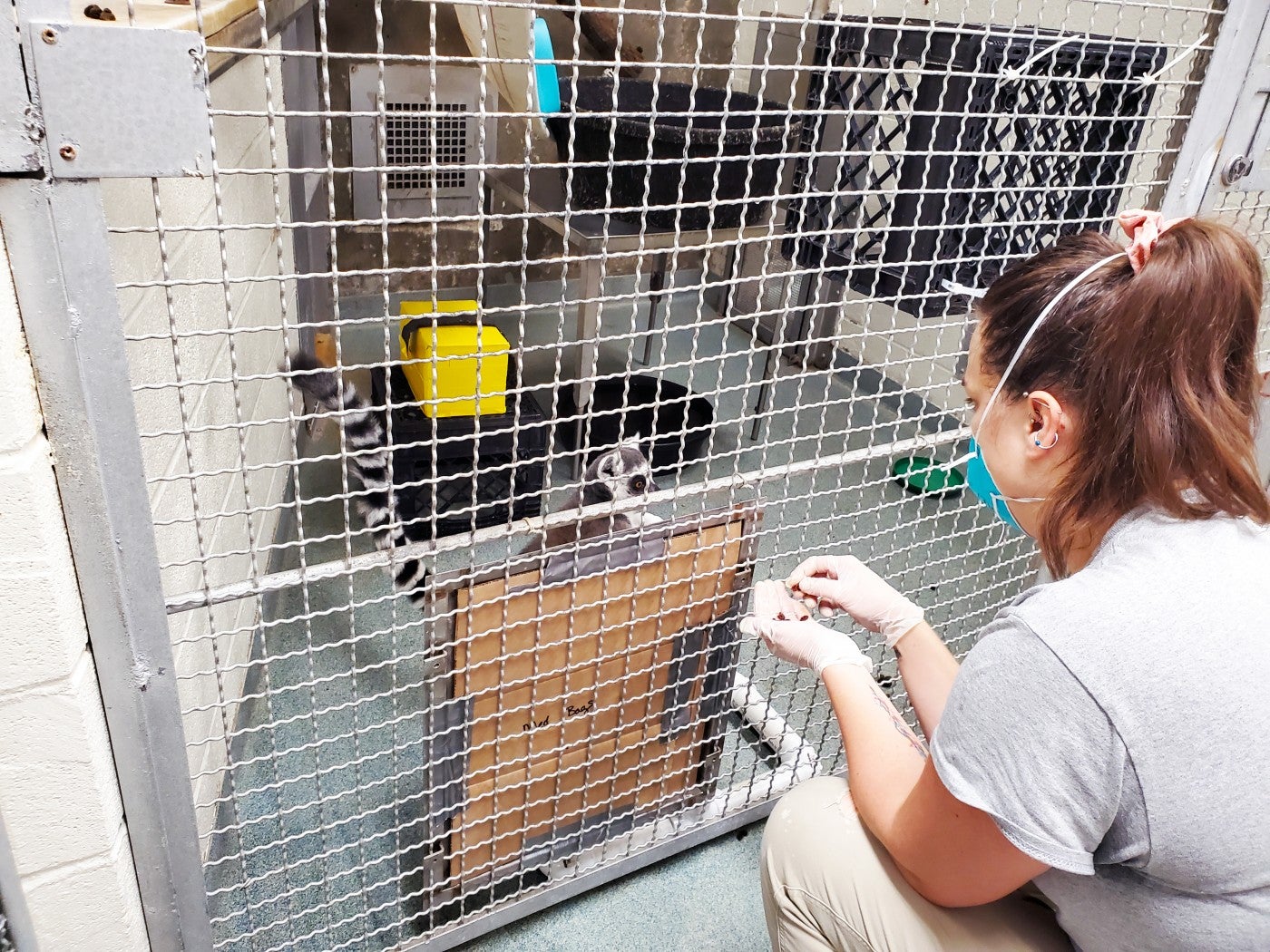
Once they reliably came to the t-stand on the floor, I added in the other tools—the fake radiograph machine and the plate holder. Other primate keepers joined our training sessions and pretended to be the vet techs, holding the “machine.” When we practiced with the fake X-ray plate, at times I couldn’t see how the lemur was positioned behind it. Although some put their feet up on the mesh, I waited until they positioned themselves correctly on the t-stand, then reinforced this behavior with a raisin reward.
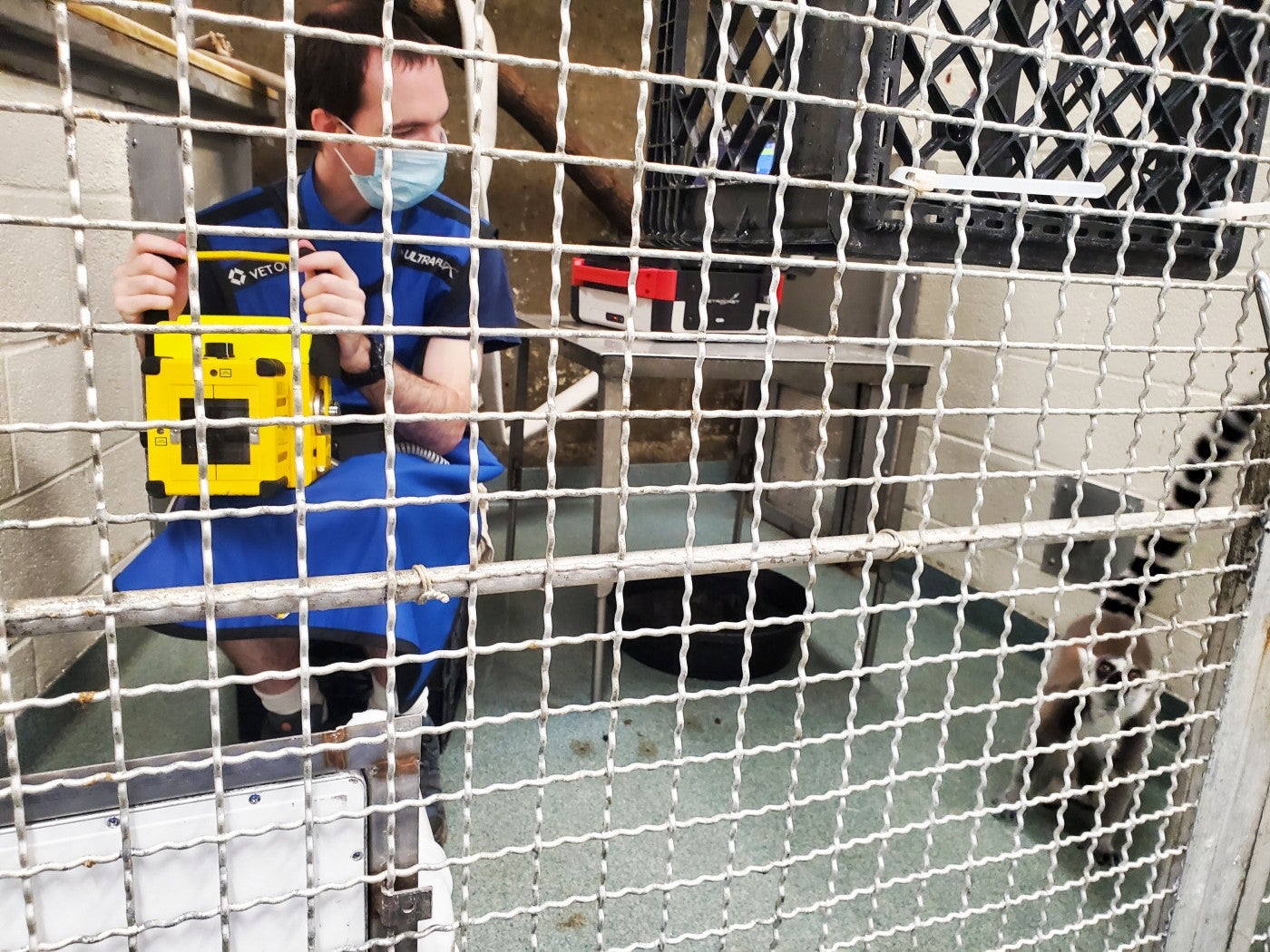
After mastering their on-the-ground training, it was time to bring in our veterinary technicians and try the real thing. Because we had prepared so well for this procedure, the lemurs were pros! Most—if not all—confidently got into position right away.
The first image we were able to obtain was of Southside Johnny, one of our ring-tailed lemurs. It was so cool to be able to see his internal organs and skeletal system! After that, it took a few more sessions with the vet tech, but eventually we were able to obtain radiographs of all of our black-and-white and our ring-tailed lemurs. From previous radiographs, we learned that Bowie had some mild arthritis in one of his elbows. Going forward, we will be able to use the awake radiographs to continue to monitor that elbow for any changes that might require treatment.
It is extremely rewarding to know that, thanks to this training, our animal care team will be able to better monitor our lemurs’ health. Medical training such as this takes patience, time and a lot of trust from the lemurs, but it is an investment that will benefit them for many years to come.
This article appears in the April 2023 issue of National Zoo News. Meet all of the Zoo’s lemurs in this update from our Primate and Small Mammal House teams, and don’t miss more stories about animal enrichment and training!

